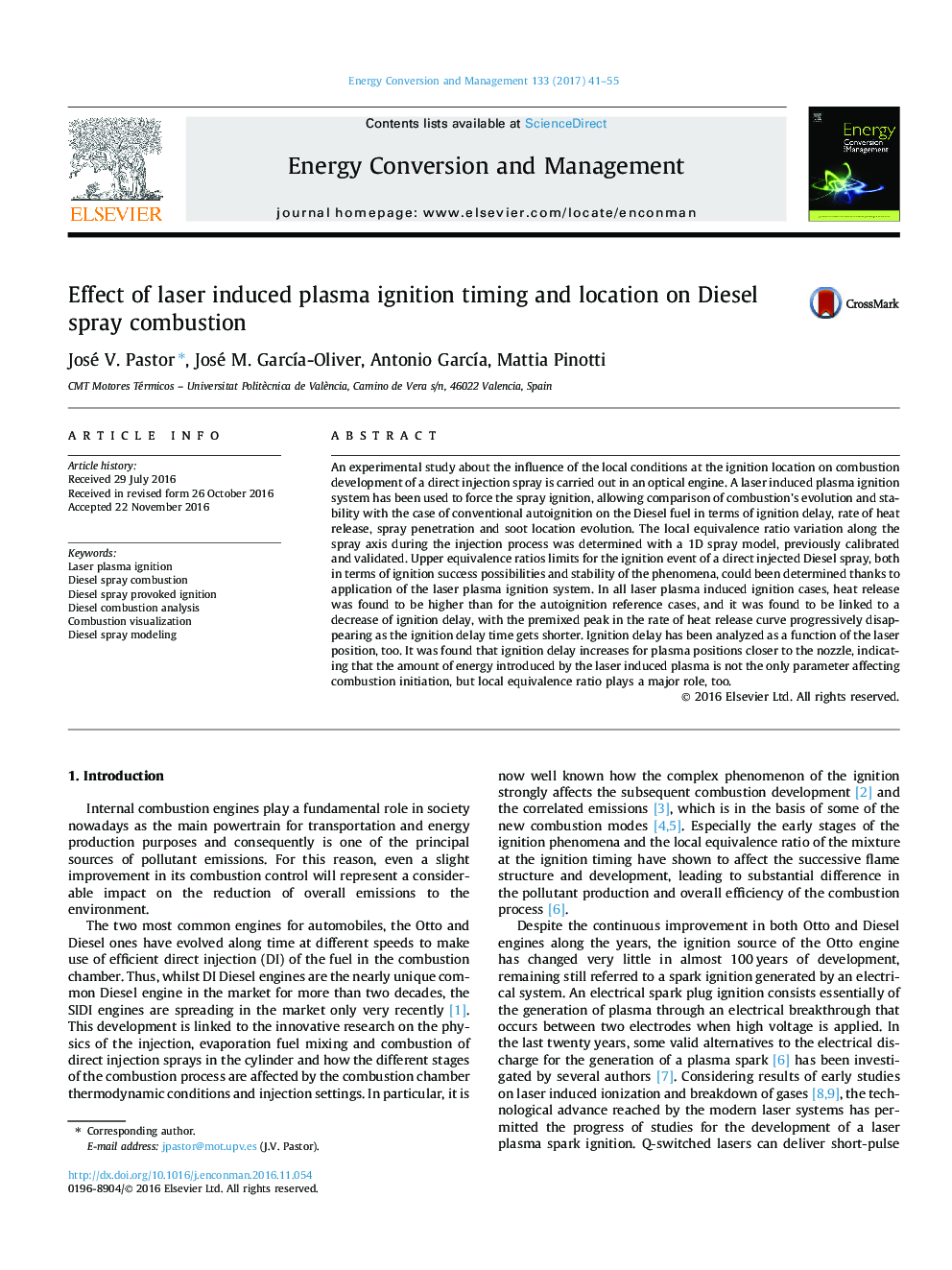| Article ID | Journal | Published Year | Pages | File Type |
|---|---|---|---|---|
| 5013007 | Energy Conversion and Management | 2017 | 15 Pages |
Abstract
An experimental study about the influence of the local conditions at the ignition location on combustion development of a direct injection spray is carried out in an optical engine. A laser induced plasma ignition system has been used to force the spray ignition, allowing comparison of combustion's evolution and stability with the case of conventional autoignition on the Diesel fuel in terms of ignition delay, rate of heat release, spray penetration and soot location evolution. The local equivalence ratio variation along the spray axis during the injection process was determined with a 1D spray model, previously calibrated and validated. Upper equivalence ratios limits for the ignition event of a direct injected Diesel spray, both in terms of ignition success possibilities and stability of the phenomena, could been determined thanks to application of the laser plasma ignition system. In all laser plasma induced ignition cases, heat release was found to be higher than for the autoignition reference cases, and it was found to be linked to a decrease of ignition delay, with the premixed peak in the rate of heat release curve progressively disappearing as the ignition delay time gets shorter. Ignition delay has been analyzed as a function of the laser position, too. It was found that ignition delay increases for plasma positions closer to the nozzle, indicating that the amount of energy introduced by the laser induced plasma is not the only parameter affecting combustion initiation, but local equivalence ratio plays a major role, too.
Related Topics
Physical Sciences and Engineering
Energy
Energy (General)
Authors
José V. Pastor, José M. GarcÃa-Oliver, Antonio GarcÃa, Mattia Pinotti,
